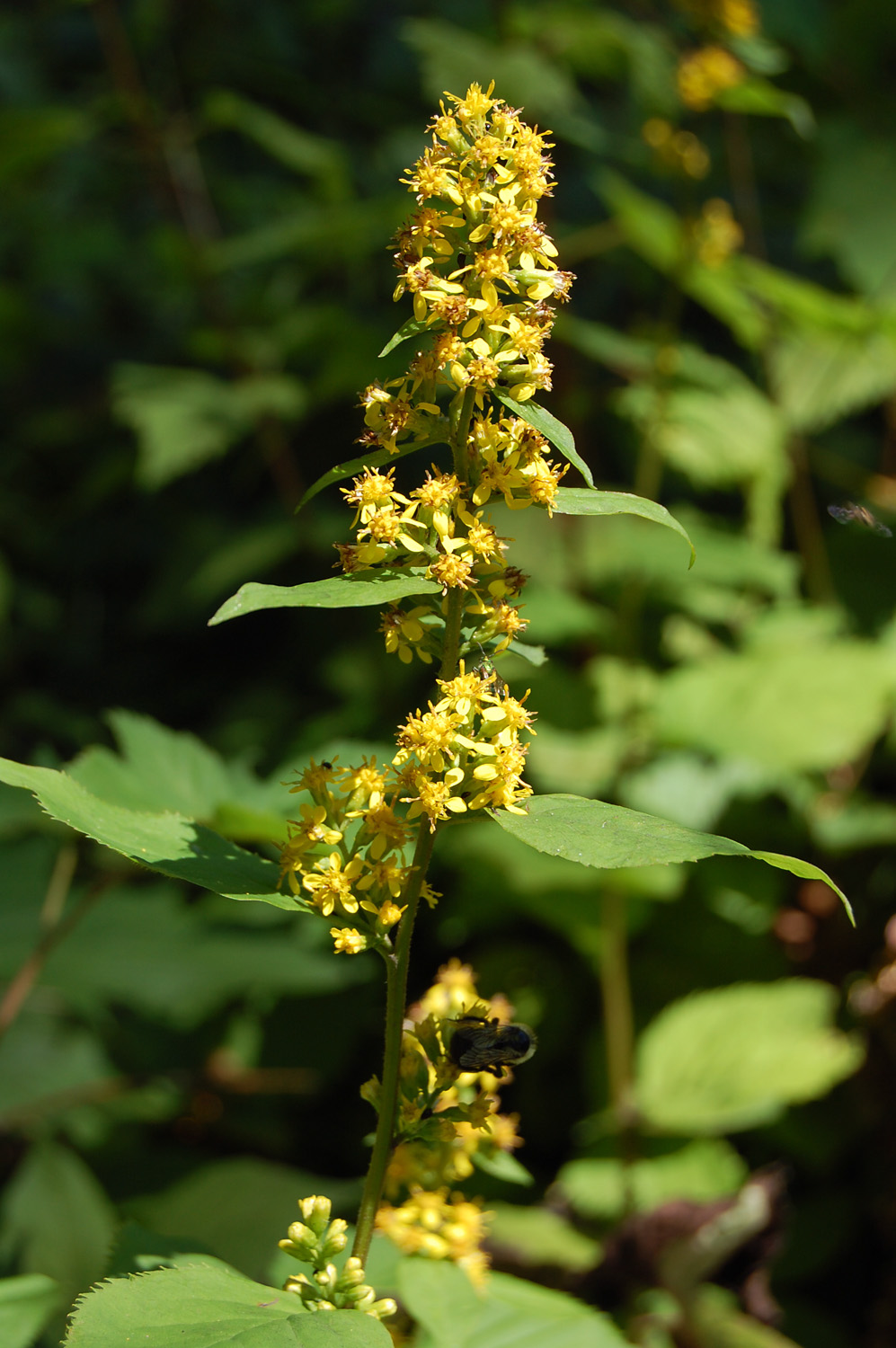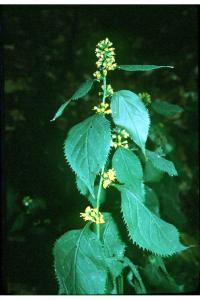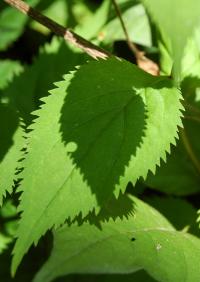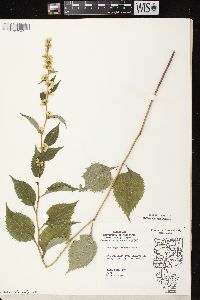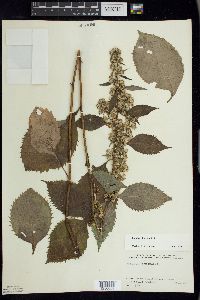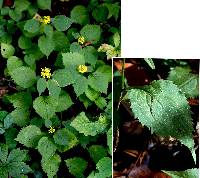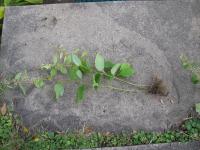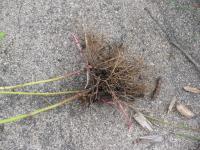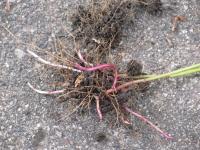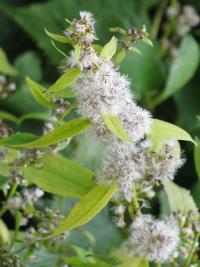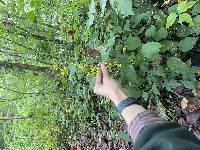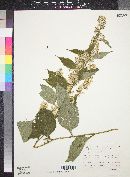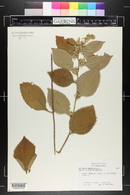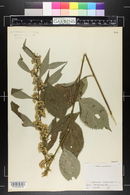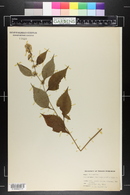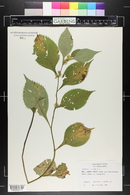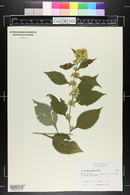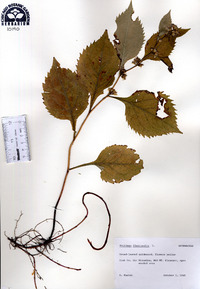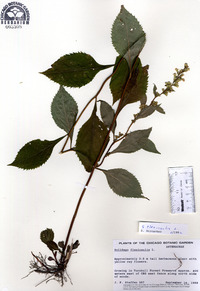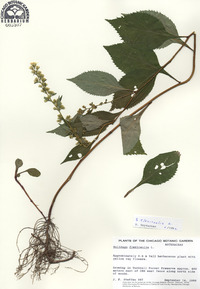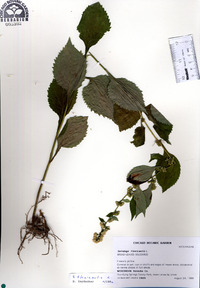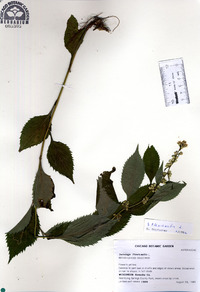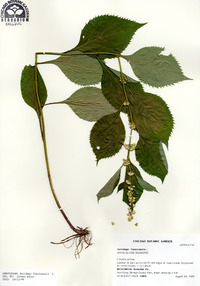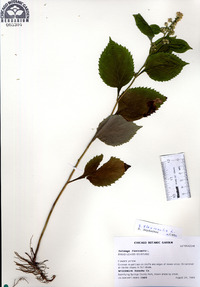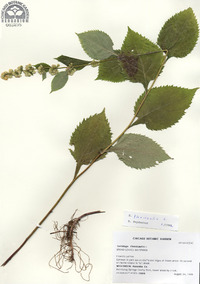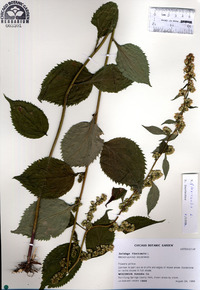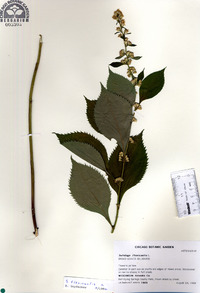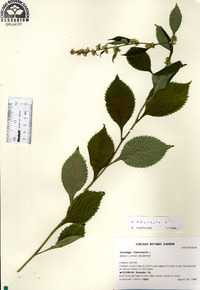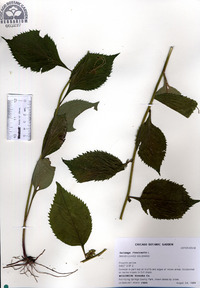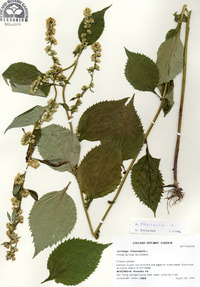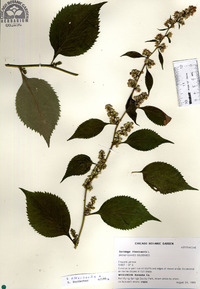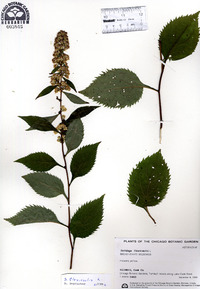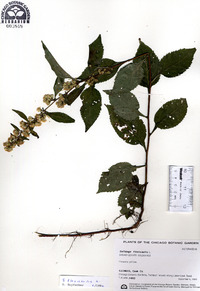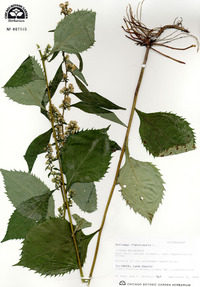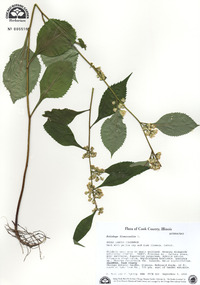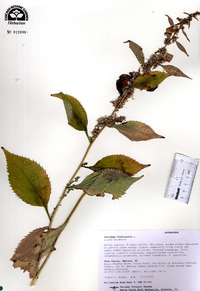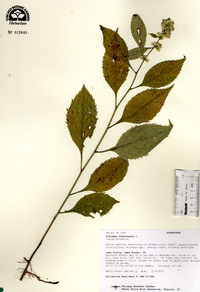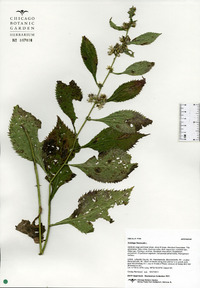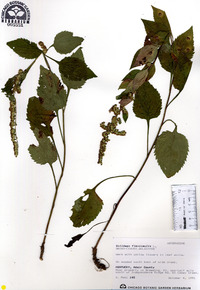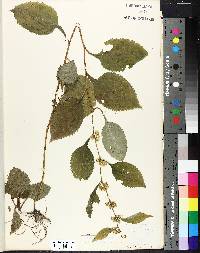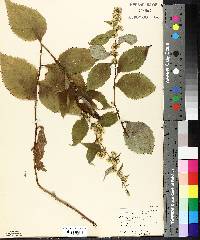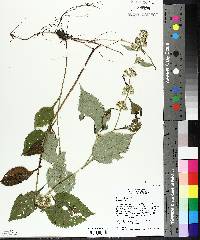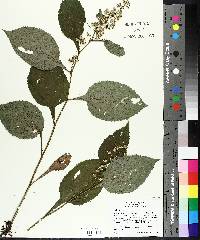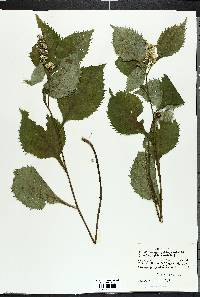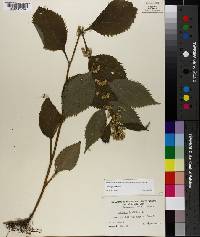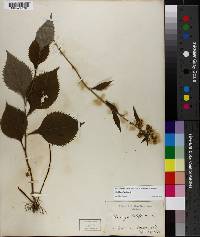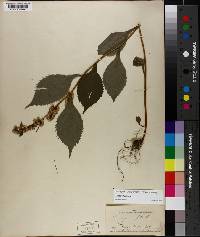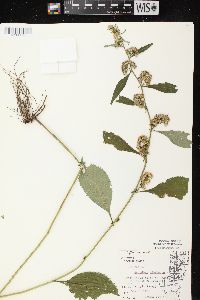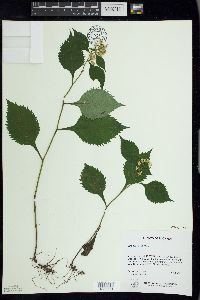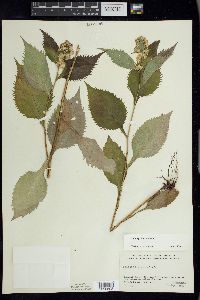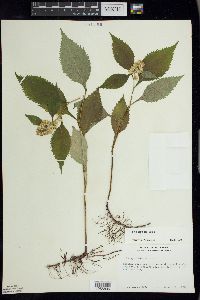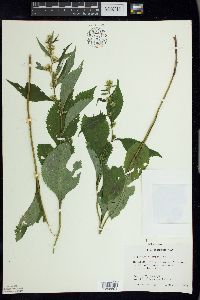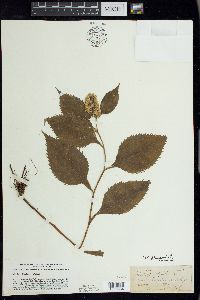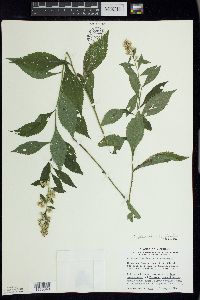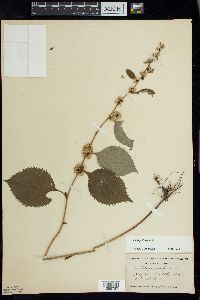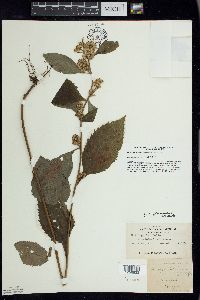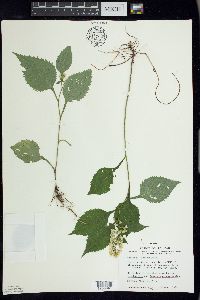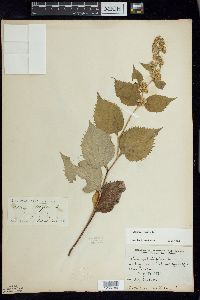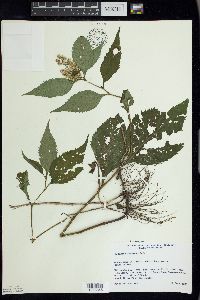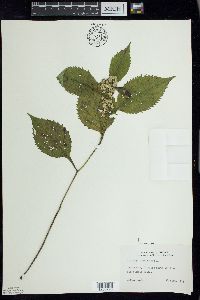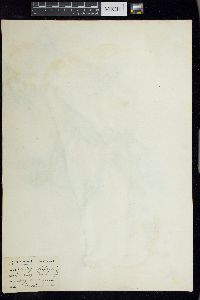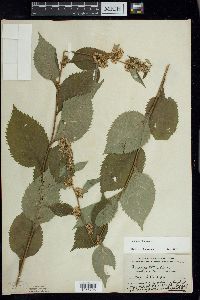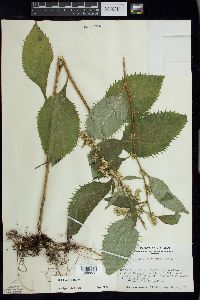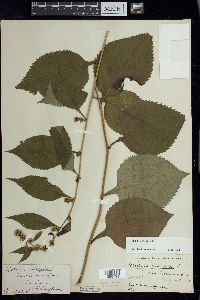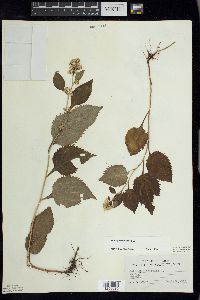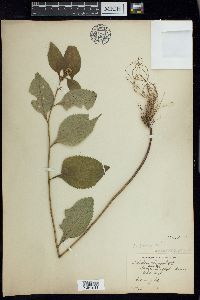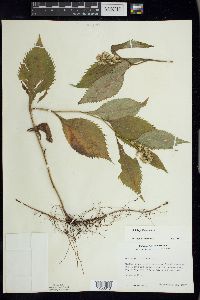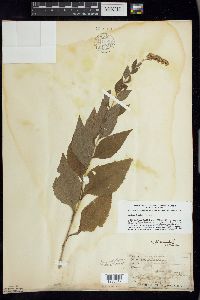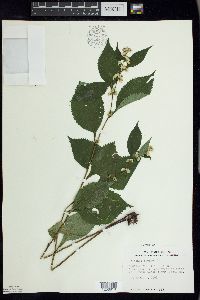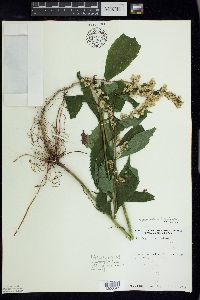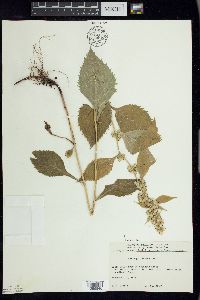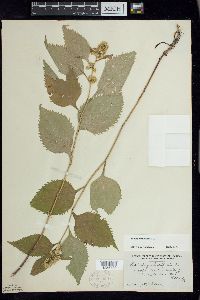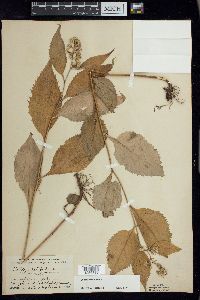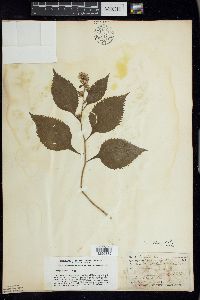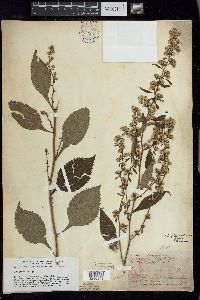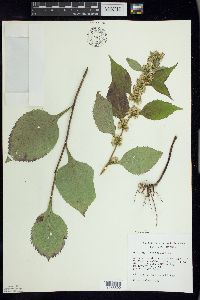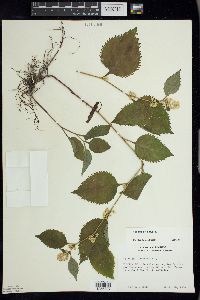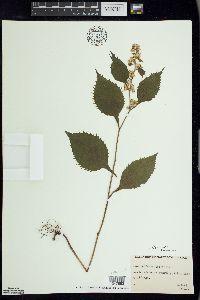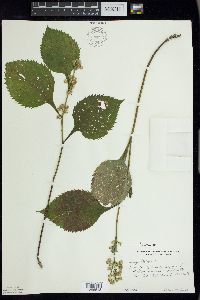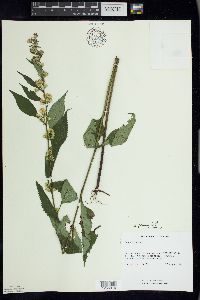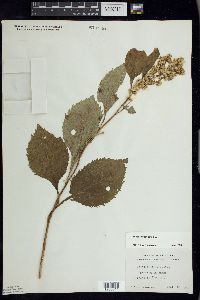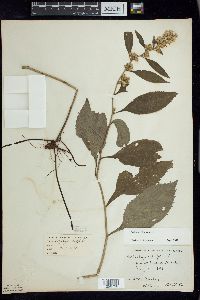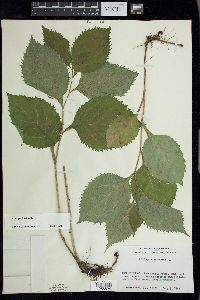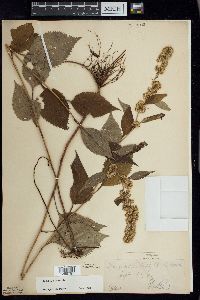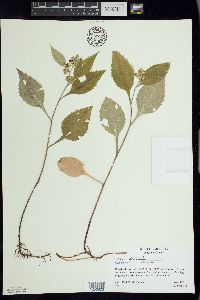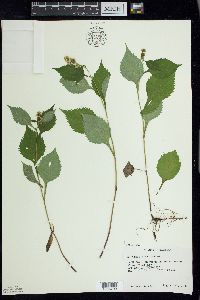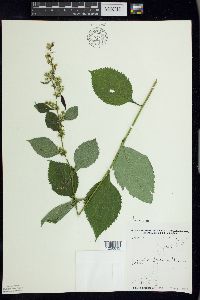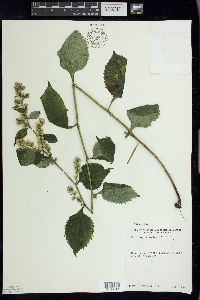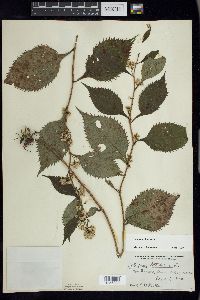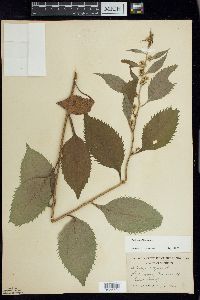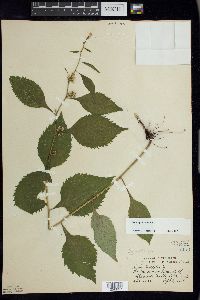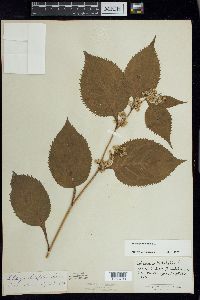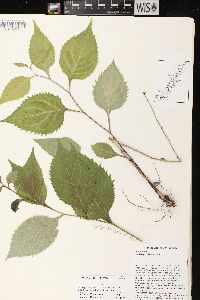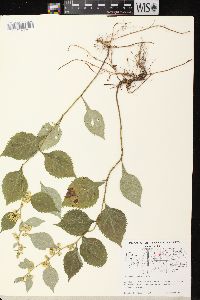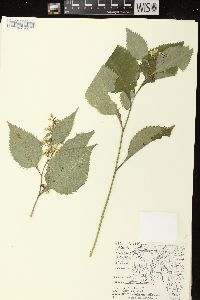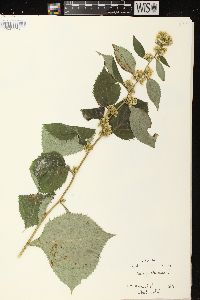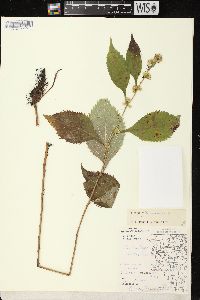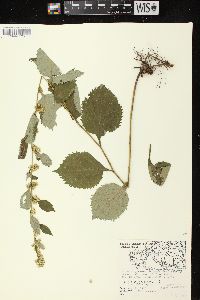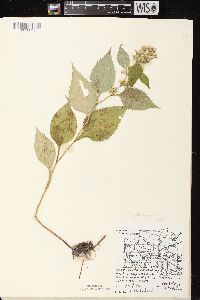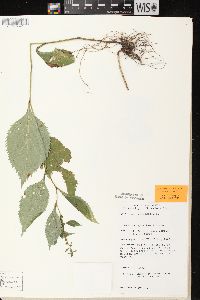
|
|
|
|
Family: Asteraceae
Zigzag Goldenrod, more...broadleaf goldenrod
[Solidago latifolia Mill.] |
Plants (15-)25-75(-90) cm; caudices woody, rhizomes short. Stems 1-5+, flexuous, sparsely to moderately hairy in arrays. Leaves: rosettes present at flowering; basal and proximal cauline tapering to winged petioles, blades ovate, (70-)100-140(-180) × (27-)40-60(-80) mm (petioles 1 / 4 - 1 / 2 total leaf length), margins serrate-serrulate [teeth (14-)21-33(-45)], abaxial faces glabrous or moderately hairy, more densely so on nerves, adaxial glabrous or sparsely hairy; mid to distal cauline sessile, blades narrowly ovate to lanceolate, 38-90(-150) × 10-30(-55) mm, reduced distally, becoming lanceolate in arrays, bases tapering, margins entire to serrate, apices acuminate to cuspidate, faces glabrous or sparsely hairy, abaxial glabrous or moderately hairy, more densely so along nerves. Heads 25-250, in short axillary and terminal racemiform clusters, lateral panicles (2-)7-31(-56) cm. Peduncles 0.5-5 mm, moderately to densely strigose; bracteoles 1-3, lanceolate, usually near base of involucres and grading into phyllaries. Involucres campanulate, 4.5-7(-8) mm. Phyllaries in ca. 3 series, strongly unequal, outermost 1-2 mm, innermost 3.7-4.7(-5.7) mm, linear-oblong, 1-nerved, apices obtuse to acute. Ray florets 1-5; laminae (2-)2.5-4(-5) × 0.7-2 mm. Disc florets 4-8(-11); corollas 2-3(-4) mm, lobes 1-1.6(-2) mm. Cypselae (obconic) 1-2(-3) mm, moderately to densely strigose; pappi 3-4.5 mm. 2n = 18, 36. Flowering Aug-Oct. Shaded woods and thickets; 0-1200+ m; N.B., N.S., Ont., P.E.I., Que.; Ala., Ark., Conn., Del., Ga., Ill., Ind., Iowa, Kans., Ky., Maine, Md., Mass., Mich., Minn., Mo., Nebr., N.H., N.J., N.Y., N.C., N.Dak., Ohio, Pa., S.Dak., Tenn., Vt., Va., W.Va., Wis. The two cytotypes of Solidago flexicaulis show a strong geographic pattern. Diploids mostly occur east of the Appalachians except in the southwestern portion of the range, while tetraploids occur west of the mountains (J. G. Chmielewski and J. C. Semple 1985). The report of 2n = 90 for the species (Semple et al. 1993) was based on a specimen of the recently described Solidago faucibus. The significance of ploidy level on cypselae traits was analyzed in detail by Chmielewski et al. (1989).
Plants 3-12 dm from long rhizomes; stem glabrous below the infl, striate-angled and grooved, tending to be somewhat zigzag; lvs chiefly cauline, sharply toothed, acuminate, usually hirsute beneath at least on the midrib and main veins, mostly with ovate or elliptic blade 7-15 נ3-10 cm, 1-2.2(-2.5) times as long as wide, abruptly contracted to the broadly winged petiole; infl a series of mostly short clusters, the lower axillary to foliage-lvs, but these progressively reduced upwards, the terminal part of the infl often appearing as a naked thyrse; invol 4-6 mm, the outer bracts obtuse, the inner broadly rounded; rays mostly 3-4; disk-fls 5-9; achenes short-hairy; 2n=18, 36, the tetraploids more western. Woods; N.S. and N.B. to N.D., s. to Va., Ky., and Ark., and in the mts. to Ga. Gleason, Henry A. & Cronquist, Arthur J. 1991. Manual of vascular plants of northeastern United States and adjacent Canada. lxxv + 910 pp. ©The New York Botanical Garden. All rights reserved. Used by permission. From Flora of Indiana (1940) by Charles C. Deam This goldenrod occurs frequently throughout the state in both dry and moist woods. It is found in colonies because it propagates mostly by stolons. …… Indiana Coefficient of Conservatism: C = 6 Wetland Indicator Status: FACU |
|
|
|
This project was made possible in part by the Institute of Museum and Library Services [MG-70-19-0057-19].
Powered by Symbiota

